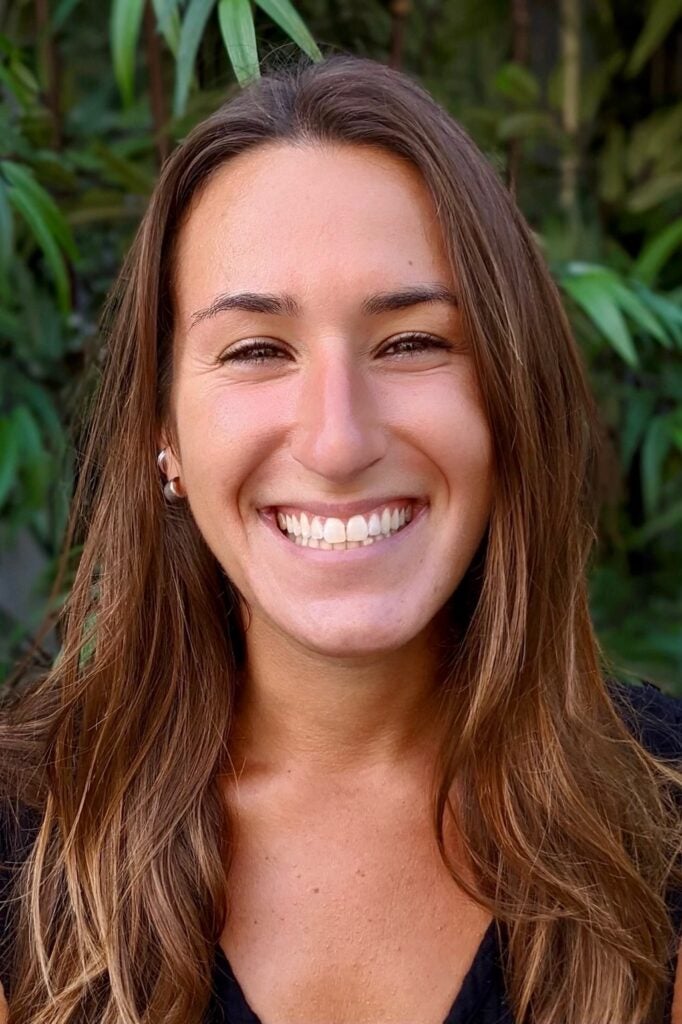Research by UCLA PhD candidate Abbie Cohen probes tensions between youth-serving education nonprofit organizations and philanthropic funders
Abbie Cohen, a PhD candidate in the Urban Schooling division at the UCLA School of Education and Information Studies, comes from a long line of educators. Teaching, she jokes, is kind of the family business. However, after earning her undergraduate degree at Tufts University, she wasn’t sure teaching was for her.
“I was always interested in education, but I wasn’t excited about teaching history, math, English or science,” says Cohen. “I knew though that I wanted to work with young people and that there were organizations that partnered with schools to support students by offering academic enrichment, support for social-emotional learning, mentorship, and addressing other needs. And so, a few years after graduating I went to work for a non-profit organization that was supporting students in an urban public high school district.”

Cohen’s job was to provide academic support to students, but while there, she also helped out with development work, raising funds for the organization.
“It was the first time I saw how organizations that were working with public school students were relying on the donations and charity of wealthy people and foundations and corporations to run their programming,” Cohen says. “I didn’t have the language at the time to describe what I was experiencing, but it raised a lot of questions for me as a young person trying to do ‘good’ work in public education. I wondered about the different layers of power in the workplace and the consequences of relying on the charity of others to run educational programming serving public school students.
“I thought I would get over it, but those questions just never went away. The more I worked in different educational environments, the more I saw the way power manifested between those with traditional capital like money, and those seeking that capital.”
Eventually, those questions would drive Cohen to pursue her doctoral degree in education at UCLA. Her research is focused on the intersection of youth-serving community-based education non-profits and private philanthropy in public education. In her work, Cohen uses critical qualitative methods and participatory approaches to explore issues of race, class, power, and privilege in educational institutions and organizations.
This past year, as she has worked to complete her doctoral thesis, Cohen published an article “Stuck between a Rock and a Hard Place: An Investigation into a Youth-Serving Community-Based Organization, Philanthropy, and Urban Public Schools,” in the Oxford Academic Journal, Children & Schools.
“This paper is a preliminary look at how power plays out between an organization that works with public school students but relies primarily on the wealth of private actors,” Cohen says. “What I find is that even though the organization attempts to support their students in amazing ways, they often feel structurally constrained to do their work effectively by having to present their successes in ways that private donors will see as success. Essentially, as the title of the paper suggests, they are stuck between a rock and a hard place.”
The article draws from a participatory, qualitative case study of the experiences of a youth-serving, out-of-school time education non-profit in a city in the Northeastern United States. For the study, Cohen refers to the organization as “PAMO” to protect its identity. The principal interviewee is referred to as “Lotus.” PAMO, writes Cohen, like out-of-school time nonprofits across the country, “sees itself as centering its cultural community wealth as a buffer to underfunded and racialized public school systems yet faces a mountain of barriers that prevent it from doing so.”
Over the past decades, such youth-serving, out-of-school time (OST) nonprofits have taken on a greater role in supporting urban public schools and students. While many offer enriching support for youth outside of traditional K–12 classrooms, Cohen contends that their reliance on private philanthropic and private sector donations often complicates their goals, potentially with significant consequences for the students at a micro level, and democratic systems, at a macro level.
In analyzing the imbalance and tensions between funders and the service providers, Cohen assesses the differing types of capital of each. Drawing on the work of French sociologist Pierre Bourdieu on cultural capital, Cohen contends funders possess cultural, social, and economic capital they use to reproduce and maintain their power by limiting or deciding who and what gets access to their charitable dollars. In contrast, Out-of-School providers, many from historically marginalized groups, hold an additional type of capital, a community cultural wealth that UC Riverside professor Tara J. Yosso defines as being “aspirational, familial, social, navigational, linguistic, and resistant,” and is often undervalued in traditional contexts. Within this power dynamic, these organizations face two contradictory realities. While the OST’s may center the assets of its community cultural wealth in their work, they struggle to present their successes in ways that private donors recognize and see value in.
“What I’m arguing in this paper is that there’s a lot of different ways of assessing capital. Communities of color, historically marginalized communities, have capital. They might not have capital in the traditional [financial] sense because of economic exploitation and historical and ongoing discriminatory policies, but often these non-profit organizations predominantly serve communities of color and are run by mostly black and brown folks and have a ton of capital,” says Cohen.
“But it gets complicated because I am also arguing that these organizations are dependent on a traditional notion of capital, on the capital of white, affluent actors. And because of that dependency, they often have to cater to those forms of capital that come from the business and financial sector, and use market models as indicators of success. And that has real and tangible consequences.”
In the article, Cohen shares comments from interviews with “Lotus,” the leader of PAMO, and three staff members who frame the conversation by saying, “People don’t recognize this is a community, not a business.”
Lotus told Cohen she is often asked, “What’s your business model? How are you going to grow? “What are your key performance indicators of success?”
Meanwhile, Cohen says, “Lotus is thinking, what key performance indicators? That’s not what we’re talking about here. We aren’t talking about products. We’re talking about elementary age girls. There’s not a key performance indicator available right now.”
Cohen’s study also shows these tensions are visible in PAMO’s strategic plan and in the day-to-day operations of staff. A document analysis conducted as part of the study revealed the overwhelming influence of the business-oriented lens. Phrases and words like “growth and expansion,” “branding,” and “innovation” were ubiquitous, beating out language that the organization celebrates and that program staff emphasized like “strong,” “mentorship,” “girlhood,” and “dream.”
And interviews with staff make clear they wrestle with the contradictions of the values and processes of the day-to-day operations and the necessity of private fundraising, causing stress and tension as they do their work.
“It always comes back to the dollar signs,” Cohen writes. “While the organization aims to center students’ well-being, it also must bend to privatizing structures that devalue the young people at the center of their programming.”
Cohen’s paper also underscores the racial aspects of the relationship between those in the funder class, and OST providers like PAMO.
“The organization in this study is run by a Black woman who is from the community in which the organization is located. It primarily serves Black and Brown girls and youth,” says Cohen. “Yet they rely on the elite philanthropic class, where the majority of the dollars are held by white men, and the funding relationships are managed often by white women. In that world, an OST nonprofit like PAMO faces an uphill battle for donations. And if they resist the corporate jargon expected from such funders, they risk losing out on much-needed cash. While working with public school students, OST nonprofits are pressured to speak the language of the (largely white) private sector. Those dynamics are really overlooked in educational scholarship,” Cohen says.
Cohen digs into and expands on these issues for her dissertation, conducting an ethnographic study and immersing herself using participatory approaches with the organization and their partners. She also shares a closer look at these challenges in an upcoming paper, “A Spectacle by Design: A Racialized Performance for Donor Dollars,” to be presented by Cohen at the annual meeting of the American Educational Research Association in Denver, Colorado, Wednesday, April 29. 2025. https://tinyurl.com/24xnwlk8
